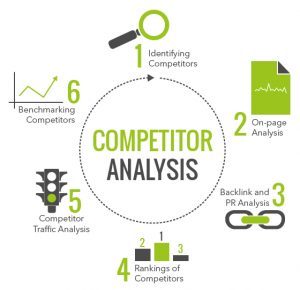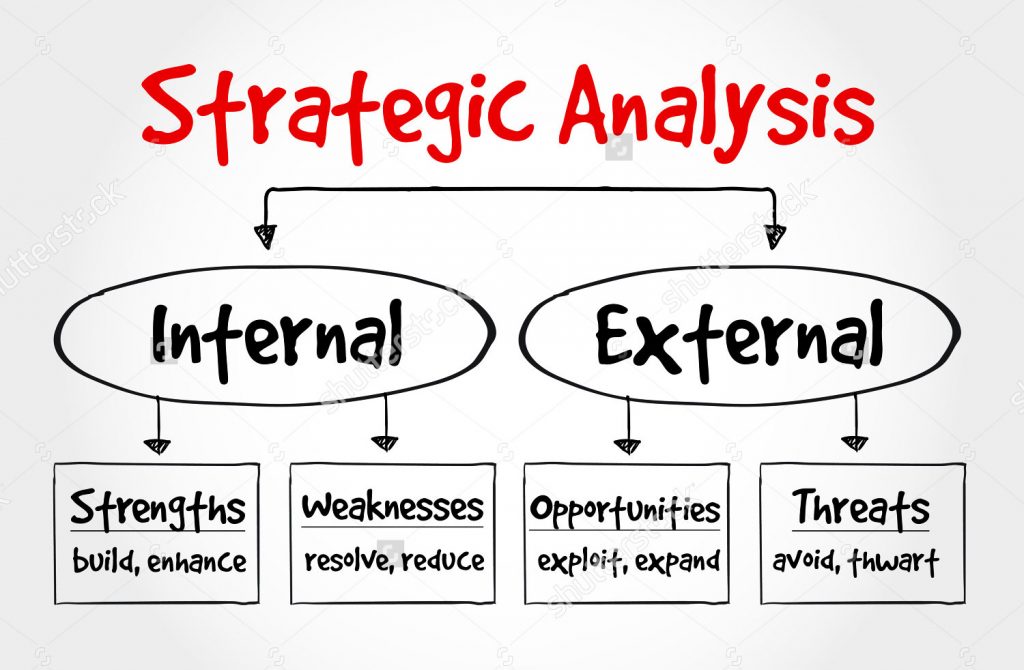 by Guest Blogger, Alex Cheng, Owner of Boutique Websites
by Guest Blogger, Alex Cheng, Owner of Boutique Websites
It is quite easy to let your business run the exact same way it did last year. Same recurring clients, same marketing activities and same results. Some of you might think that taking the time to review and plan is a waste of time. I mean, you could be going out there and making money or simply enjoy the holidays =) However, it is many times more effective to work out a plan before working in your business. According to Palo Alto’s research survey, it is twice as likely to be successful with an updated business plan.
The key to growth and achieving your goals is to have a plan and work strategically. Otherwise, your business will be stagnate and lack progress. Below are 10 powerful steps to take at the end of 2016 so that you can maximize growth in 2017!
Why It’s Vital To Review Your Business For Success?
If you are fully aware of your business, it will pay you dividends many years into the future. Your business’ current condition is based on all the activities (actions) that your company has taken thus far. If you are aware of your business and strategically plan out each year, you will set a clear path to your goals. With these goals clearly defined, you won’t be stuck in the day-to-day without any progress.
A great example is golf; if the golfer adjusted his swing even by 1 degree in the wrong direction it would mean that the golfer will miss his mark by many inches depending on how far his target was. If you do not have a clear goal for your business and don’t know your business’ progress, you won’t even know where to swing the golf ball.
The steps in this article will be particularly useful if you…
- Feel uncertain in your business performance
- Are not maximizing your efficiency or profits
- Business is not responding to your market demands
- It’s time for a new business plan.
Therefore, a thorough review of your business goals, progress and efficiency is vital to your business success.
Your Core Activities VS Revenue Generating Activities
A great place to start is to analyze your current products / services. What kind of product / service are you offering to your customers? Make a chart and answer the below questions for each product / service that you offer. It is a great way to reveal opportunities to add complementary products / service or take away products / services from your offerings.
- Is your product / service satisfying the needs of your customers? If so, how effective are they satisfying their needs?
- Which product / service are in demand? Which product / service are providing the highest profit margins? Which product / service is taking up your resources (time, money, storage space, etc.)
- What are the issues or problem in the products / services that you are providing? (pricing, ease of use, quality, sales process or after sales service?)
Having a great product / service is great, but without marketing and sales, there won’t be any revenue coming in. Here are a few questions to ask yourself when it comes to your revenue generating activities:
- What are your current marketing / sales activities and campaigns?
- What were the results for each activity and how much time did you spend on each one?
- What are other complementary marketing channels / tool available?
- What are some simple adjustments or additional actions that could generate a higher Return On Investment (ROI)?
- What are your current marketing and sales tools (business cards, website, logo, etc.) and how effective are they?
Business Efficiency
Many small businesses are reactive in nature and offer many flexible options for their clients. This is normally not efficient for your business and stunts growth. In this section we will look at potential internal factors that is holding your business from being more efficient in its day-to-day operations. Remember, time is money. If there are ways to improve the efficiency of your processes, then you can deliver more products / services to your clients and increase your overall revenue.
Please consider the following factors to improve your business’ efficiency:
Office / Premise Space:
- What are your long-term commitments to the property? (lease, own, etc.)
- Does the current capacity of your office / premise impact your existing or forecast demands? (Is there room to grow or cut back?)
- If you moved, will there be any long term cost savings or improved efficiency?
- How do you compare with your competitors?
Information Technology and Applications:
- What systems do you have in place for your business? (Accounting software, Project CRM, Sales CRM, email systems, etc.)
- Will these systems support your growth goals?
- Do they really make a difference in quality or efficiency in your product / service? If not, is there a way to optimize them so that they do?
- Are there new technology / applications out there that would improve your efficiency or your value offerings?
Your Team and Skills:
- Does your company have the right people and skills to achieve your goals this year?
- Do you have a training and development plan?
- Do you have a high turnover of staff? Is your team happy and satisfied? What can you do to improve their job satisfaction and happiness?
Financial Position
A lot of businesses fail because of a lack of financial planning. The plan that your company started with is probably on your shelf collecting dust. Without financial planning your business can run into a cash-flow crisis or go into a revenue loss.
With a sound financial plan, your business will stay prosperous even if it run into a few speed bumps along the way.
When considering your financial position, ask yourself the below questions:
- Cash-flow: This is all the monies that come in and out of your company. Make sure you have enough available cash-flow throughout the year. If you temporarily run out, you may have to resort to borrowing.
- Direct & Indirect Costs: Make sure that your costs are covered by your sale price. If there are any inefficiencies or unplanned costs, don’t expect your customers to cover that cost. Look at direct costs (cost per unit or service sold) and indirect cost (cost that are not directly linked to cost per sale such as rent, personnel, security, etc.)
- Business Loans: What are your current debt? What is your current situation when it comes to borrowing? Are you borrowing to grow your revenue or to support a business that is not self-sustaining?
- Future Growth: Is your business setup to enable future growth? What are some additional needs that will arise as a result of your business’ growth?
Competition & Market Analysis
Have you been keeping an eye on your competition? What prices are they charging? What additional services are they offering? What makes them competitive? It will take a bit of time to do your competitive analysis, but the rewards definitely outweigh the cost of your time spent.
This exercise will reveal many opportunities for your business that you can use to ultimately achieve your goals. I would suggest doing a SWOT Analysis (Strength, Weakness, Opportunities and Threats) for yourself and each of your competitors.
Below are a few question you would want to consider as well:
- What product / services are offered?
- What is their price structure?
- What is their customer’s profile and numbers compared to your’s?
- What are their advantages and disadvantages compared to your’s?
- What are some of their credibility factors that they have? (awards, PR, etc.)
- What are their online presence?
- What marketing tactics have they used?
- What is their sales process?
Do some online research to see if you can answer all of these questions, but chances are, you would need to reach out to them in order to come up with a comprehensive analysis.
Here are some questions to ask yourself:
- Were there any changes in your target market(s)?
- Were there new technology that would affect your business?
- Did your customers’ needs change?
- Are you fulfilling on your customers’ needs?
- Was there competitive activity?
- Is there a potential that the economy could affect your business? If so, how can you adapt to it?
Remember to think through the implications of any change and ensure that your finances are in order with the new changes in place. A SWOT Analysis for your company would give you a good overall understanding of your business, but if you want a more detailed analysis you can always send out a survey to get additional insight to your business.
Using Your Goals To Redefine Your Business
With all of this analysis, research and review, you can establish your goals for 2017. But wait!! You probably forgot one crucial thing and that is to celebrate your successes. Celebrate that your business may have had some breakdowns / speed bumps but you are still in business, celebrate all the milestones you’ve hit in 2016 and all the little wins you had along the way.
To grow your business (not remain at the same state), you must constantly ask yourself these questions:
- Where is your business now?
- Where do you want it to be?
- How are you going to get there?
There are many businesses that know where they are right now and where they want to be. However, they have no clue as to how to get there. With all the research and opportunities that are revealed as a result, it is not always easy to leverage the research and opportunities. If there are no concrete road map to get you there in an effective and efficient manner then nothing will change.
Here are some points to consider:
- Do I have the experience needed to leverage the opportunities available to my business?
- Do I have the skills to tactically execute on my action items? And if not, could I take time to learn them myself?
- Should I hire a marketing expert to point me in the right direction or create a marketing strategy and proposal that would help my business to achieve its goals?
When you are making your goals, make sure they are goals that are worth achieving. Make them just a tad bit over the moon. Make them so that there is a big chance that you won’t be able to achieve them but if you do, it would be a breakthrough!
Strategic Analysis Models
Below are a few Analysis Models you can use:
- SWOT Analysis (Strength, Weakness, Opportunities and Threats): This is by far the most popular analysis. Some would argue that this is the most effective. By doing the SWOT Analysis, you will have a great overview of your business’ capabilities, what to look out for and what to take advantage of. Some opportunities are also threats and some threats are also opportunities. For example, if there is an opportunity to pursue large charity events but these events usually requires a detailed RFP process. If your company spends too much time on the RFP process and doesn’t get the project, it would be a threat for your business. This would cost your business’ labour and time.
- STEEPLE Analysis – a technique for understanding the various external influences on a business – Social, Technological, Economic, Environmental, Political, Legal and Ethical.
- Scenario Planning – a technique that builds various plausible views of possible futures for a business. This is custom to your specific business.
- Critical Success Factor Analysis – a technique to identify the areas in which a business must succeed in order to achieve its objectives. Sometimes called KPIs (Key Performance Indicators).
Now that you have followed the above steps, make sure your business is in good health. If there are any issues revealed in the above steps, deal with them first before moving forward.
Boutique Websites is a boutique marketing agency that works specifically with businesses in the special events industry in the GTA and surrounding area. We specialize in website design, graphic design, printing services and online marketing services. If you have any questions or would like to book a free 30 minute consultation, reach out to Alex by email, alex@boutiquewebsites.ca.
















Leave a Reply